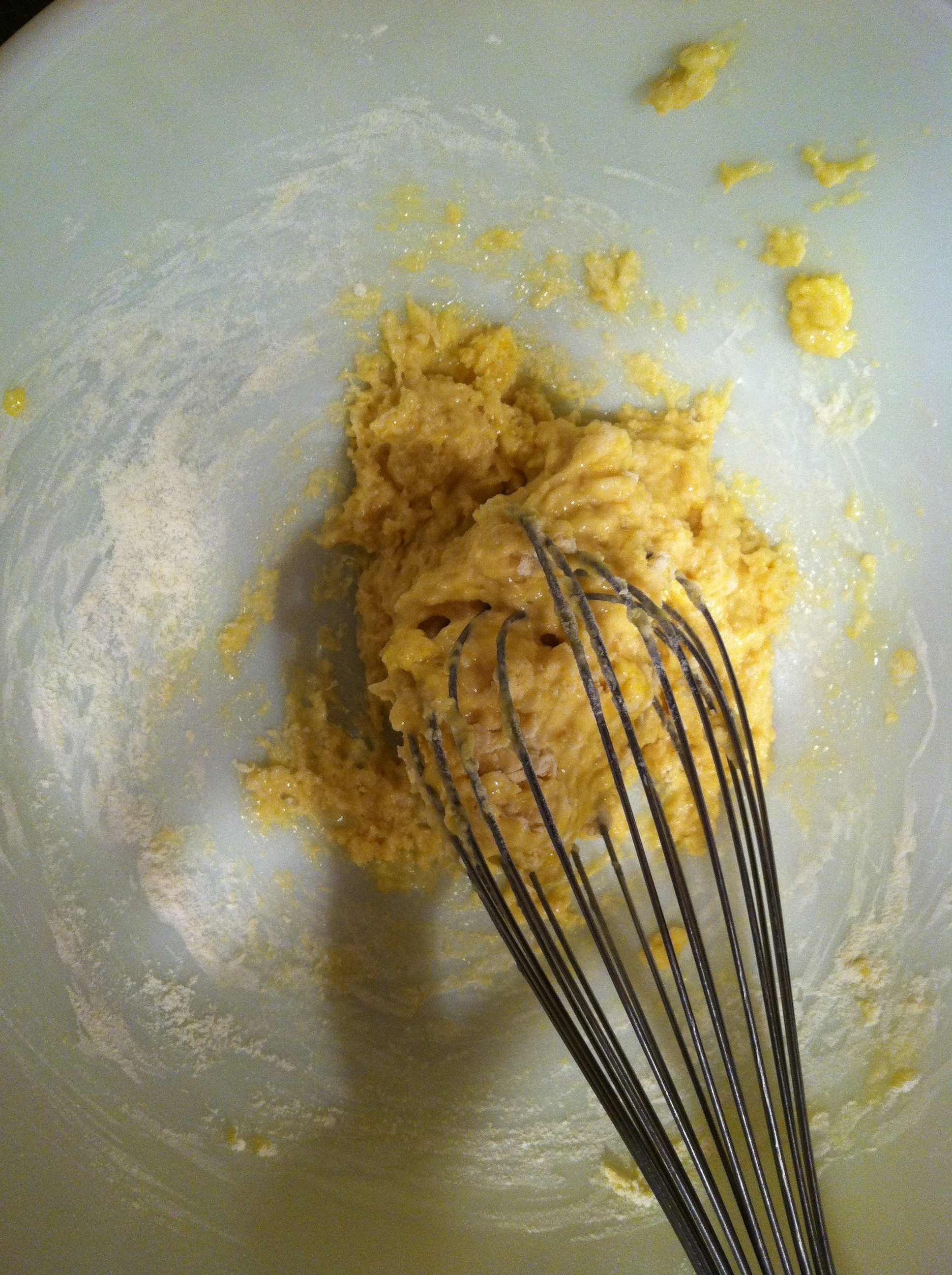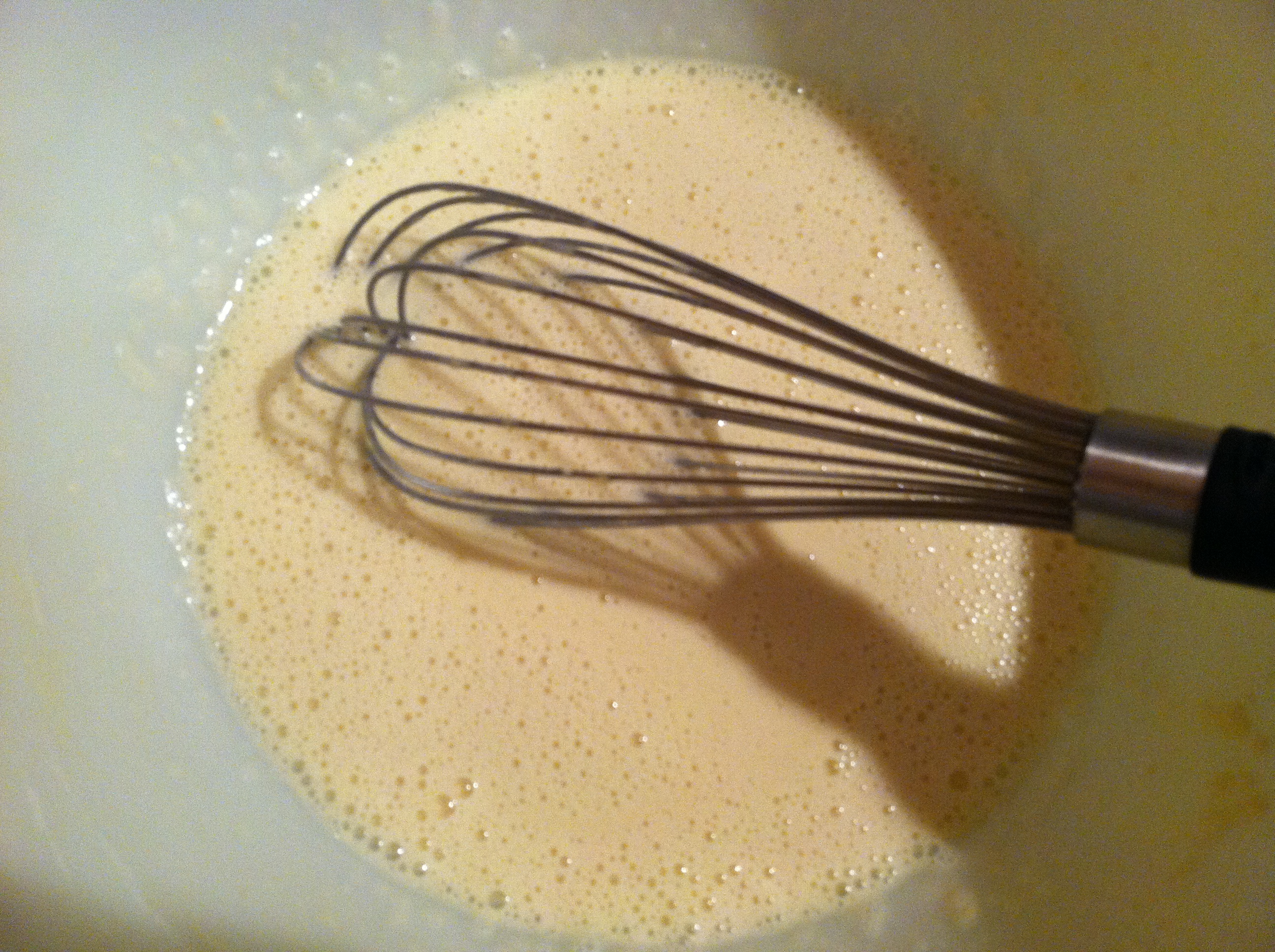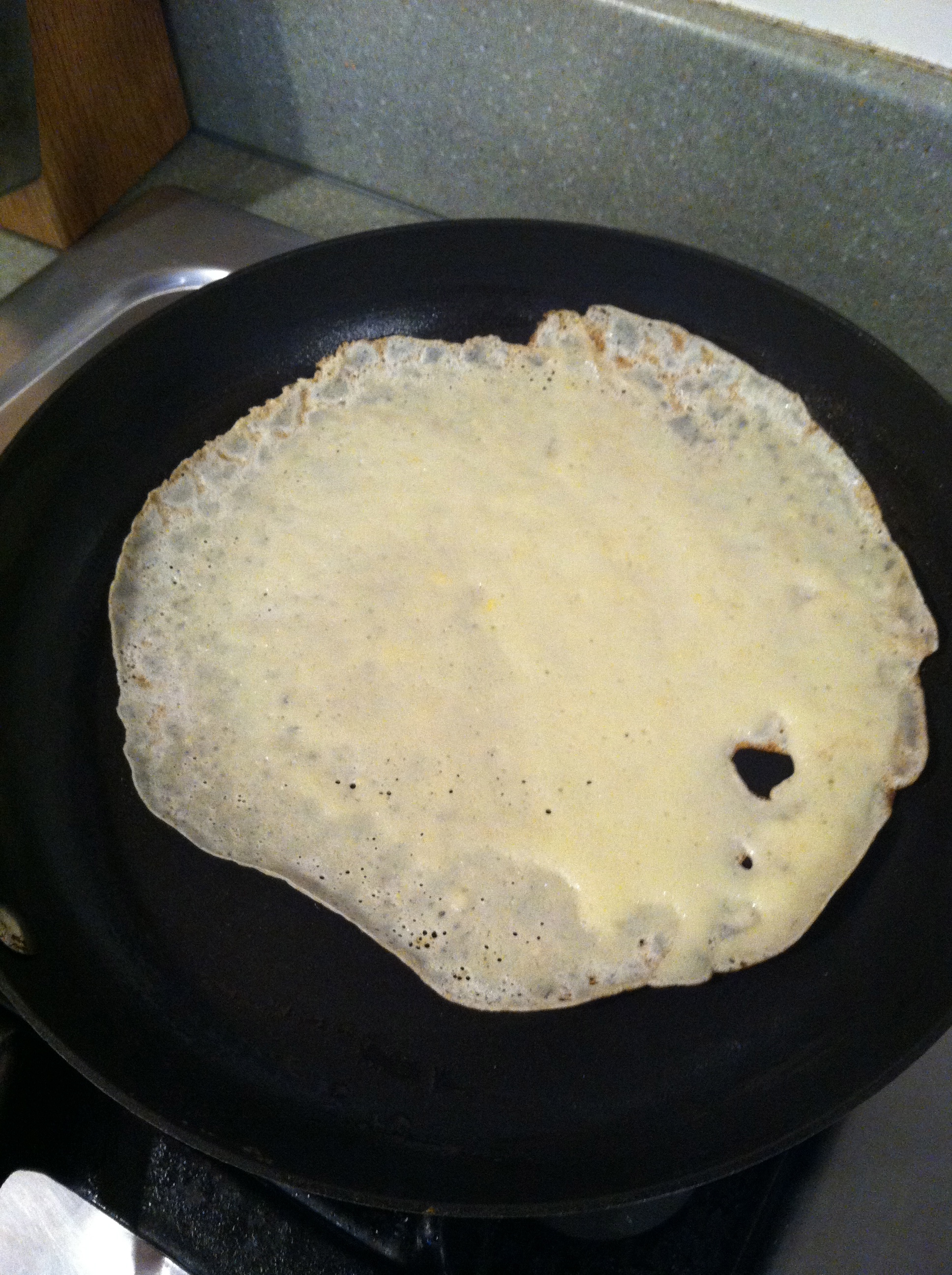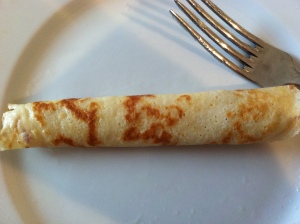
Pancake Day and the English art of flipping pancakes
As a child growing up in England, Pancake Tuesday or Pancake day was perhaps, one of the most eagerly anticipated days of the year after Christmas and birthdays.
Thin crêpe-like pancakes (not like the American thick pancakes I make) were traditionally eaten on Shrove Tuesday (pancake day) to use up the rich foods that would not be eaten during lent – eggs, milk and sugar.
Pancake day memories
Religion and fasting aside, the reason children love Pancake day is that for one night a year mums and dads around the country would adopt the role of children’s entertainer whilst cooking – flipping or tossing pancakes in the air as they cooked. And the fact that we got to eat what was essentially dessert for dinner – pancakes topped with sugar and lemon juice (usually out of a plastic lemon-shaped Jif bottle). Occasionally, a misguided but well-intentioned mum or chef would attempt to convince us that a lasagna made with pancakes and vegetables and cheese was a good addition to pancake day. Nope. This is all about the sugar.
Children would come to school the day after Pancake day bursting with tales of how many pancakes they had eaten. There would be stories of pancakes being flipped and ending up stuck to the ceiling. Or, in the case of me and my friends Lindsey and Sarah, the year their lovely mum Anne, accidentally flipped one right into a bowl of soapy dishes in the sink while we watched. Hilarious.
We were further whipped into a frenzy by the fact that every children’s TV show and regional news programme would devote segments to pancake flipping in the run up to the big day. Some towns also hold pancake races. The most famous of these, at Olney in Buckinghamshire, has been held since 1445. The very specific rules (which I guess will now be enforced by a middle age man in a high-vis jacket) mean that women who run the 415 yard course must wear an apron and a head scarf (and men must dress as women – natch). And they must flip their pancakes in their frying pan at the start and the end. I love England.
The only recipe you need for pancake day
Here is the recipe I use, adapted from Delia Smith’s – the most English and trustworthy of English cooks. It makes around a dozen pancakes. Note that the first pancake will usually be a bit pale and not as crispy as those which follow so don’t be put off.
They can be made ahead of time and either kept in the fridge for a few days or frozen with layers of parchment between each pancake to prevent sticking. You can also use these pancakes instead of pasta in cannelloni or lasagna if you fancy.
Pancake ingredients (makes enough for 4 people as dessert):
- 110g or 4oz plain [all purpose] flour, you can even use spelt flour for a lower gluten pancake
- a pinch of salt
- 2 eggs
- 200ml or 7 fl oz milk (cow or alternative)
- 75ml or 3 fl oz water
- 50g or 2oz butter
- To serve – lemon juice and sugar. Or you can use lemon curd, golden syrup or jam.
Equipment
- digital scales
- a mixing bowl
- measuring spoons
- whisk
- measuring jug
- silicone spatula
- a non stick frying pan
- citrus juicer
You can now buy the equipment I use in this recipe via these links or through my shop. I’ve spent years testing my favourite bits of equipment so rest-assured that whatever I recommend is the best tool for the job and will give you great results without cluttering your kitchen with unused tools. I receive a small affiliate fee from Amazon if you buy via my link. The products don’t cost you any more. These small fees help me keep creating all the free content I share.
To make pancakes:
1. Whisk the flour and salt together in a large bowl then use the whisk to make a dip in the centre of the flour. Imagine you’ve dropped a tennis ball into the flour and pull fit out to leave a hole
2. Break the eggs into the hole and whisk them together, incorporating the flour, or as much flour as you can until you get a thick paste (see photo). Don’t worry if you don’t get it all mixed together yet.
2. Mix the water and milk together in a jug then gradually add the liquid to the eggs and flour mixture while you continue whisking. Keep whisking until you get rid of all the lumps and are left with a smooth batter. Be sure to scrape all the way around the bowl and underneath to get all the flour. It will be more liquid than the batter for American pancakes if that is what you are used to making. At this stage you can leave the batter for a few hours if you’d like – not for any culinary reason, just if you’d like to get ahead.
3. When you’re ready to cook, melt the butter into a frying pan – I usually use a light weight one like my Scanpan which is around 22cm or 9 inches across. In fact, I usually have two pans on the go at once to make the pancakes twice as fast. This isn’t the recipe for a cast iron pan unless you are have very strong arms. When the butter is melted, pour around two-thirds of it into the batter and leave some in the pan. Wipe the pan with kitchen towel so that some butter remains in the pan. Hold onto the buttered towel as you will use it again to butter the pan in between making each pancake
4. Get the pan really hot then drop it to a medium heat. Use a ladle and add around 3 tablespoons of batter to the pan. As soon as the batter hits the pan, swirl the pan around to help the batter spread evenly into a very thin, flat pancake. on’t worry if the edges aren’t perfect – they will turn crispy and lacey. After a minute, lift the edge with a spatula to see if it is golden then flip. Either be sensible and flip with a spatula, or go for it and toss it in the air by shaking the pancake towards the edge of the pan, then flipping the pan towards you so that the pancake flips into the air and turns over. Make a wish while you flip and maybe do a few trial runs before you invite your audience to watch. Once flipped, leave the other side to cook on the other side for around 30 seconds before sliding onto a plate.
5. Repeat until you have used all your batter. To keep pancakes warm, lay pieces of parchment in between each one and either wrap in foil in a low oven 150C or 300F or place on a plate on top of a pan of simmering water. Or, do what most people do and feed them straight out of the pan to your frenzied children.
6. To serve, sprinkle the pancake with sugar and lemon juice then roll it like a cigar before slicing into rings and eating
Sign up for more
Sign up for my free newsletter. You’ll get free seasonal recipes, tips and videos. You’ll also be first to hear about my online and in person courses.
I agree to be emailed about your products and services




